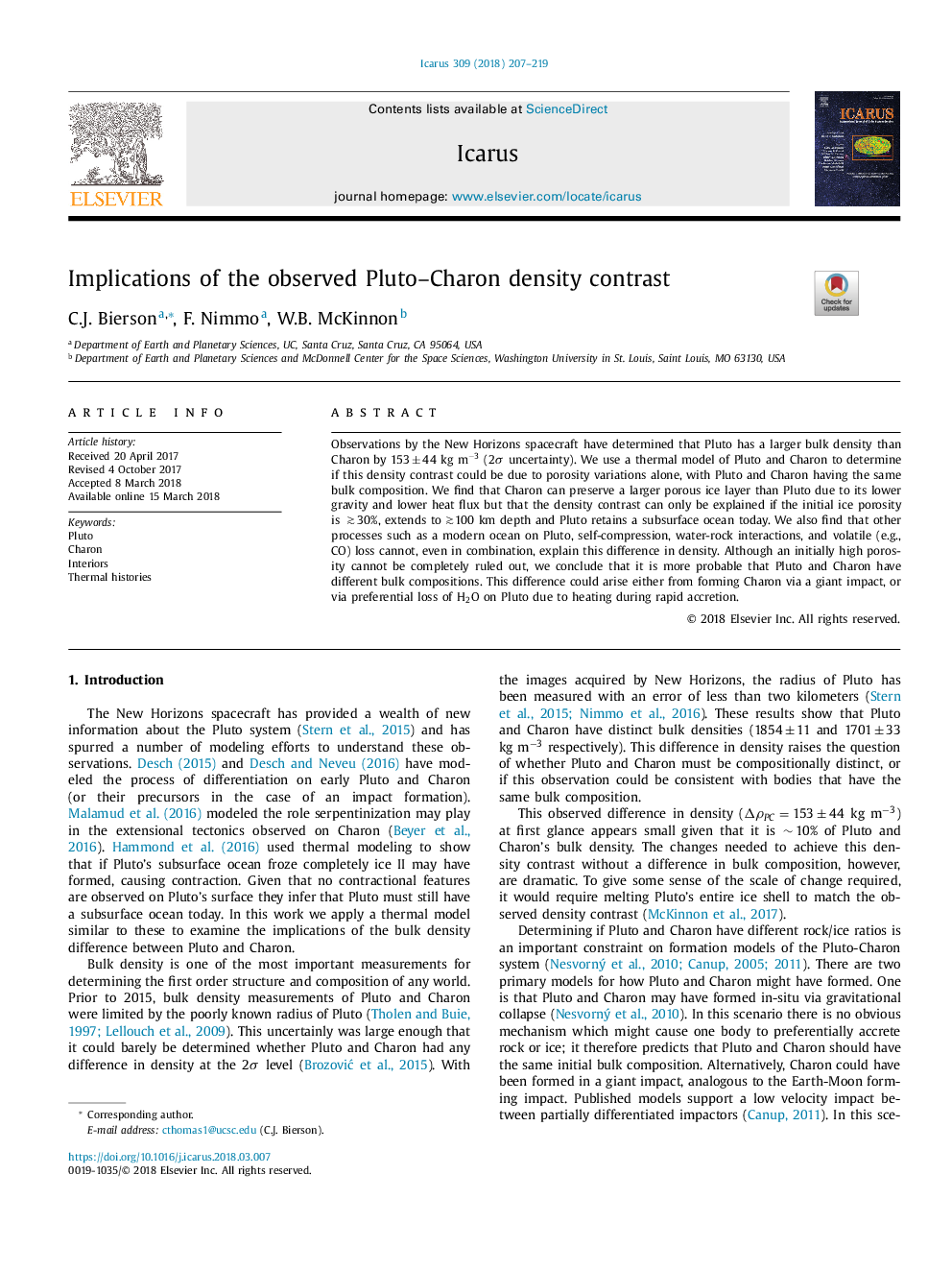| Article ID | Journal | Published Year | Pages | File Type |
|---|---|---|---|---|
| 8134082 | Icarus | 2018 | 13 Pages |
Abstract
Observations by the New Horizons spacecraft have determined that Pluto has a larger bulk density than Charon by 153â¯Â±â¯44 kg mâ3 (2Ï uncertainty). We use a thermal model of Pluto and Charon to determine if this density contrast could be due to porosity variations alone, with Pluto and Charon having the same bulk composition. We find that Charon can preserve a larger porous ice layer than Pluto due to its lower gravity and lower heat flux but that the density contrast can only be explained if the initial ice porosity is â¯â³â¯30%, extends to â³100 km depth and Pluto retains a subsurface ocean today. We also find that other processes such as a modern ocean on Pluto, self-compression, water-rock interactions, and volatile (e.g., CO) loss cannot, even in combination, explain this difference in density. Although an initially high porosity cannot be completely ruled out, we conclude that it is more probable that Pluto and Charon have different bulk compositions. This difference could arise either from forming Charon via a giant impact, or via preferential loss of H2O on Pluto due to heating during rapid accretion.
Related Topics
Physical Sciences and Engineering
Earth and Planetary Sciences
Space and Planetary Science
Authors
C.J. Bierson, F. Nimmo, W.B. McKinnon,
